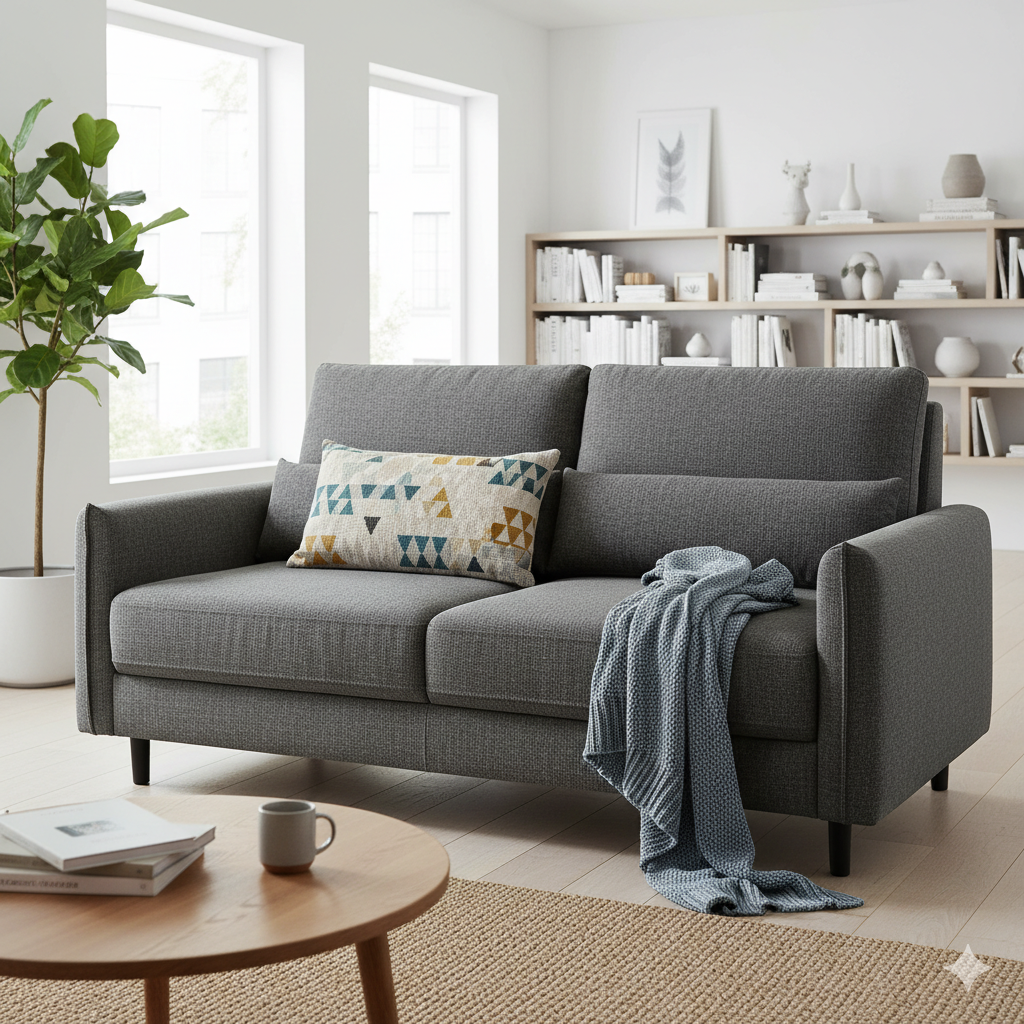In the U.S. furniture market, a quiet revolution is underway—compressed sofas, often called “boneless couches,” are rapidly gaining market share, with young consumers leading the charge. What was once a niche product has evolved into a mainstream favorite, driven by shifting lifestyle needs and viral social media buzz. This blog explores why these space-saving, portable sofas are resonating with millennials and Gen Z, and how they’re reshaping America’s furniture landscape.
The Surge in Market Share: Data-Backed Growth
Compressed sofas are no longer a passing trend—their market presence is expanding at a remarkable pace. Key indicators highlight this upward trajectory:
- Search volume for “boneless couch” on major U.S. e-commerce platforms spiked by 34.67% in a single week, with over 50,000 new searches reflecting surging consumer interest .
- Top sellers are seeing extraordinary results: some U.S.-based online stores generate nearly $50,000 in weekly sales from compressed sofas, with premium models priced at $900+ still flying off shelves .
- TikTok has become a growth catalyst, where the hashtag “raisingabonelesscouch” boasts hundreds of thousands of user-generated videos—many racking up tens of thousands of likes as shoppers share the “magic” of watching a compact package expand into a full-size sofa .
- Chinese manufacturers, a major supply source, are struggling to keep up: one export-focused factory in Hubei reported orders backlogged until the end of the year, a testament to unmet demand .
Why Young Americans Choose Compressed Sofas
Millennials and Gen Z, who now make up a significant portion of the U.S. consumer base, are driving the compressed sofa boom. Their preferences align perfectly with the product’s core advantages:
- Portability for a transient lifestyle: Young Americans move more frequently than previous generations, often renting small apartments. Compressed sofas solve the “big furniture hassle”—vacuum-sealed in compact packages, they’re easy to carry solo and fit through narrow doorways, eliminating costly delivery and moving fees .
- Affordability in a budget-conscious era: With price sensitivity high among young earners, compressed sofas offer compelling value. Most models retail around $300, a fraction of the cost of traditional wooden-framed sofas, without sacrificing comfort .
- Space-saving design for urban living: 64.5 million Gen Z Americans increasingly live in small city apartments. These frameless sofas, filled with high-resilience foam or latex particles, adapt to tight spaces while providing cozy seating—no bulky frames to limit layout flexibility .
- Social media appeal: Young shoppers trust peer recommendations more than traditional ads. The satisfying unboxing and expansion process of compressed sofas is highly shareable, turning customers into brand advocates on TikTok and Instagram .
The Future of Compressed Sofas in the U.S. Market
As young consumers solidify their status as key spending drivers—with Gen Z’s spending projected to grow by $8.9 trillion by 2034—the compressed sofa’s growth trajectory shows no signs of slowing . Brands are already innovating to capture more market share: modular designs, stain-resistant fabrics, and pet-friendly options are becoming standard, catering to young shoppers’ desire for personalization and practicality .
Cross-border sellers, particularly from China, are dominating the segment thanks to efficient supply chains, but domestic U.S. brands are also entering the fray with direct-to-consumer models . With Americans increasingly prioritizing flexibility, affordability, and digital discovery in furniture shopping, compressed sofas are well-positioned to become a staple in young households across the country.
Would you like me to add a section on top compressed sofa brands for U.S. shoppers, or include more data on market share projections to strengthen the article?






